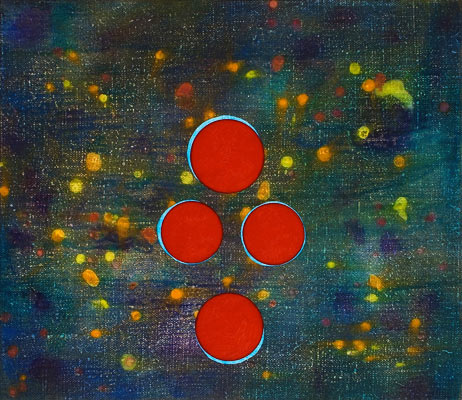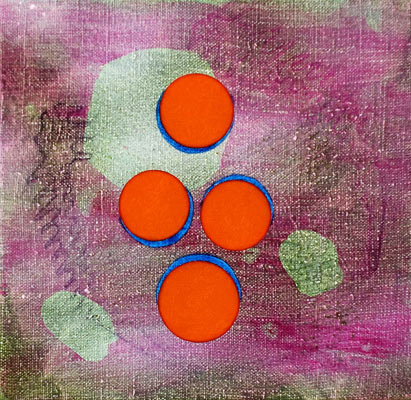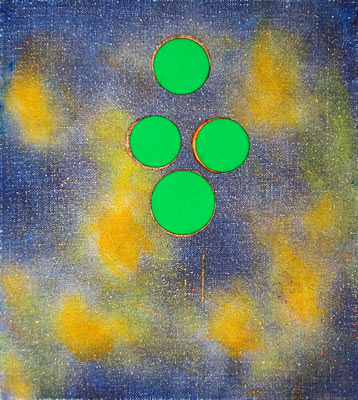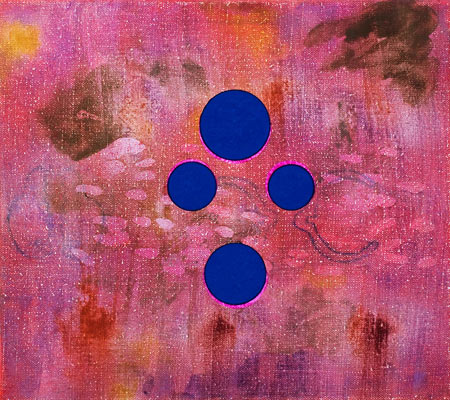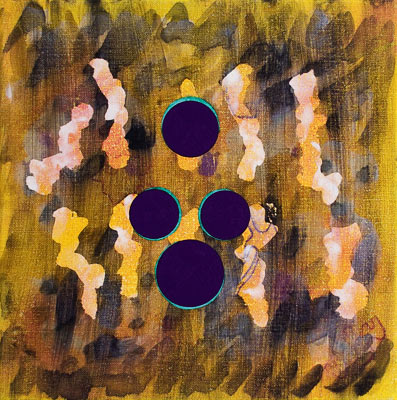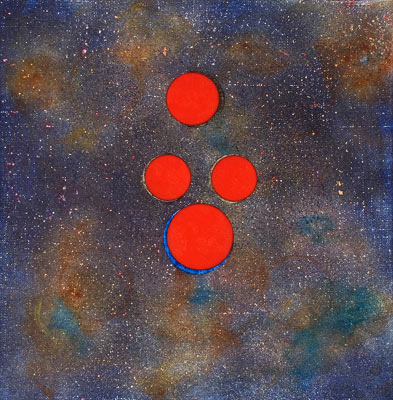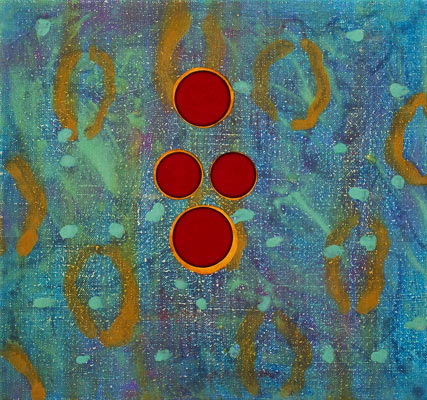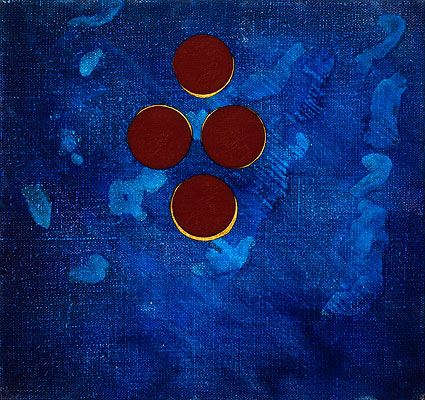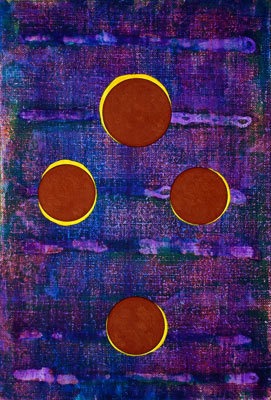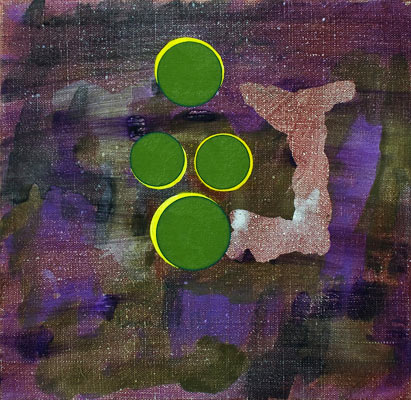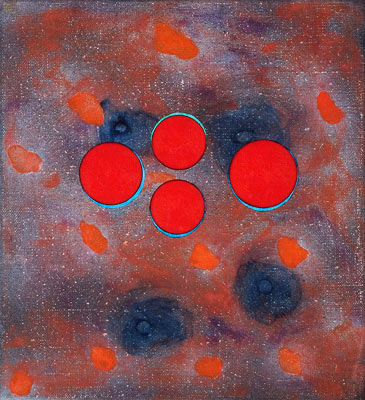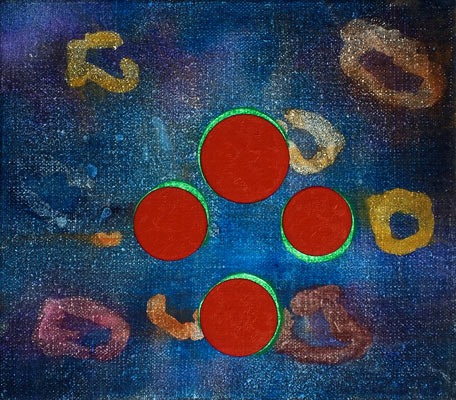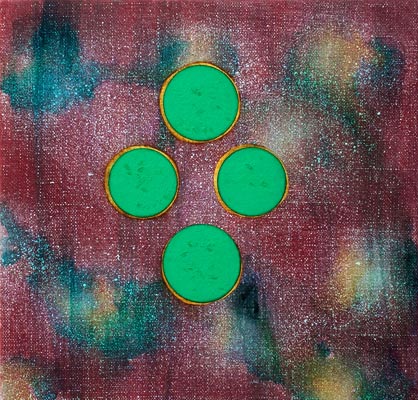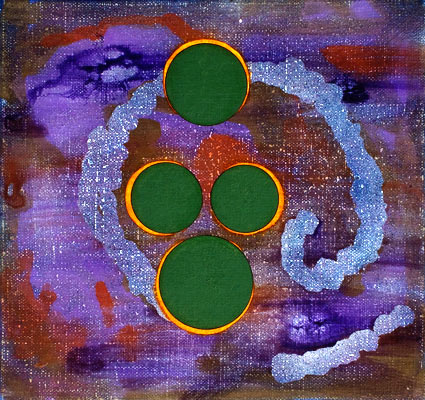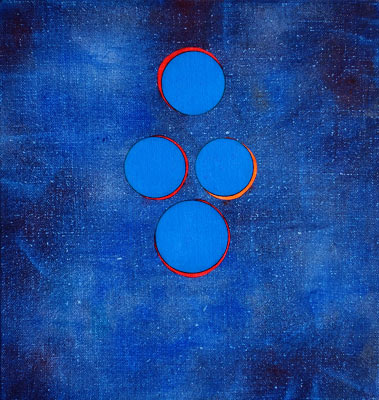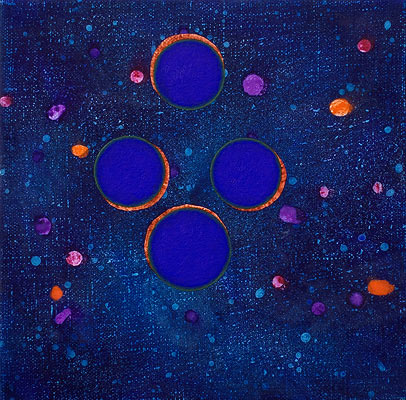Technique of Avant-garde and Metaphysical Logic
sitemap
drawings
paintings 1 2 3 4 5 a b c -
- A B . . . . . . . new
installations
projects
reviews
titles of ...
paintings not created yet ...
Technique of Avant-garde and Metaphysical Logic
Adriano Altamira
De Chirico and Duchamp (Part 1)
I was quite struck by the almost simultaneous mention of the names of Duchamp and Malevich on page 151 of Jole de Sanna’s essay Metaphysical Mathematics published in the last edition of «Metafisica» (3-4). Although I do confess that I am not well enough prepared with regard to the geometric – mathematic themes discussed by Jole to carry on the line of investigation that our dear friend began, I admit that the de Chirico/Duchamp/Malevich link is not new to me, and that it inspires a number of reflections worthy of consideration.
Towards the end of the 1970s, following a request from Francesco Poli, I published a dossier entitled De Chirico fra Duchamp e Malevich[1] in a little magazine I was directing at the time. The association of these three names naturally had quite a different meaning back then. Following a period in which Conceptual Art and its derivatives had monopolized everyone’s attention, several new trends were gathering force and bringing figurative painting back to the limelight: Transavantgarde, Anachronism and Cultured Painting, Quotationism, etc. In a word, the entire horizon of so-called Postmodernism.
In those years Renato Barilli expounded a fascinating theory of a de Chirican parable based on absence: after Metaphysics de Chirico went on to explore the Museum in the art of Raphael, the seventeenth century and Courbet, and eventually came full circle to revisit Metaphysics and quote himself and his earlier work in the 1970s. Much emphasis was placed on de Chirico’s personal attributes as a Master of art born from art, along with his clear wish to found his artistic vision on tradition and memory rather than on nature.
De Chirico, who had been somewhat neglected after Duchamp was rediscovered in the 1960s, became an important point of reference once again, even for young emerging artists. Achille Bonito Oliva published a double-page article in «Art Dimension», in which de Chirico and himself faced each other in an imaginary dialogue, as if to support the theory that de Chirico was one of the tutelary deity of the Transavantgarde, or of that specific moment in history.
Yet the reasons for which Poli and myself were interested in this parallel were quite different. The idea, or ideas, that we wished to highlight were linked to an analytic de Chirico, whose painting proved to be not just an art born from art, but a painted reflection of painting itself; along with a certain similarity in de Chirico and Duchamp’s attitude towards the use of objects. The French artist re-used objects as they were (for example in the readymade) despite changing their names and means of employment, while de Chirico represented them as hermetic parodies for idea-guides within his work under the humble disguise of everyday objects used in still lifes[2]
With regard to Malevich, for whom collage is an important point of departure, and who seemed during the first Suprematist phase to carry out a sort of displacement and re-naming of geometric forms, similar to that effected by Duchamp with everyday objects, perhaps ever since his Alogist period (fig. 1). Further indirect evidence of this can be found in several works carried out in those years (1914-15) by the Russian artist Ivan Puni (fig. 2) – heretical disciple of Malevich and Rodcenko – which depict combinations of geometric forms, common objects and writing, all treated as though on a par with one another.
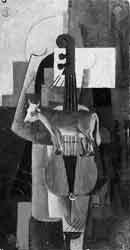 fig. 1 - Kazimir Malevich Cow and Violin, 1913 |
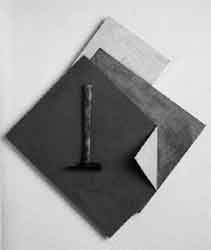 fig. 2 - Ivan Puni Still Life: Relief with a Hammer, 1914 |
It could of course be noted that there is a fundamental difference between Duchamp’s Dadaist technique and de Chirico’s metaphysical one: the use of painting. De Chirico adopts traditional means, distancing the object to the meditative sphere of painted representation. Duchamp, on the other hand, wrenches the object from a real context and inserts it in an artistic one through a conceptual process. In this sense, the distance between the two artists seems too great to bridge.
From another view point – that of philosophical reasoning through which a banal object can be transformed into pure sign while taking on an entirely new significance – it is much easier to establish an analogy between the two. This new link should nonetheless, at least initially, be considered in the light of a method that a few artists adopted in 1912-1913 of extrapolating objects from the real world and reintroducing them in mutated form in the world of representation – or in the practice of sampling everyday materials beginning with the first collages.
Indeed Louis Aragon was most acute in observing: “Collage gives back the most authentic meaning to the old way of painting, preventing the painter from spiraling into narcissism, into art for art’s sake, and taking him back to that magical practice which is both the origin and justification of those plastic representations banned by many religions”[3]
This reference to magic, which justifies the artist’s removal and manipulation of common objects, is interesting from at least two perspectives: a) because the painter is qualified for this practice; b) because during such manipulation the object loses both its function and its primitive meaning, to take on a new one – the one it must (magically) assume in the representation –. Obviously this second meaning should not simply depend on the positioning of the object within the work. For example, in Picasso’s collage a newspaper fragment can represent an entire newspaper, as a sort of synecdoche; or a pipe (if cut in that shape); or it could simply be used as a background on which to draw or adhere new shapes. The method of attaching the fragments with pins is testimony, among other things, of Picasso’s habit of moving the various elements around before deciding on the final composition. It is also a clear indication of the combinatorial nature and the thought processes involved in collage. The procedure seems almost a forerunner to the moving and manipulating of icons and texts with extreme fluidity and ease, today made common-place by the use of computers.
Of course, the compositions of objects that de Chirico depicts in his metaphysical still lifes seem in primis to be bound to the significance that the objects take on once they are interlinked; as if the relationship created between different presences were to bring back, for example, a distant memory, the feeling left by a dream, or even a kind of magical revelation.
De Chirico said that “when a revelation occurs upon viewing a composition of objects, the work that appears in our thoughts is closely linked to the circumstances that brought about its birth”. A group of objects, incongruously juxtaposed in a way that would not be encountered in everyday life, would have just this power to take us to another dimension, to the heart of a new logic. The hypothesis of de Chirico as a “magical collagist of objects” (obviously in a metaphorical sense) thus becomes extremely meaningful, and consents a comparison to Duchamp’s samplings (for example the readymade). The French artist, coming from a cubist tradition, could also have been inspired by and made radical use of the collage technique baptized by Braque and Picasso, particularly in his readymades. Unfortunately there is virtually no concrete evidence of this transition. Duchamp, during his cubist period from 1911 to 1913, is not interested in collage, but rather in decomposition and the resulting effects of dynamism and movement. As soon as there is some glimpse, albeit fleeting, of a technique similar to collage – in the Roue de biciclette assemblage of 1913 – it becomes clear that Duchamp has already moved on from the questions explored by Cubism. Indeed the French artist has probably by this point already painted, or is about to paint, his first Broyeuse de Chocolat (1913/1914), moving closer to a poetics, which with the benefit of hindsight, we would have to call Dadaist.
Evidence of de Chirico’s interest in Cubism in those years – from his arrival in Paris until 1914 – is also somewhat presumptive. The thesis of William Rubin[4] proposing a closer relationship between de Chirico and the Avant-garde (in particular with cubist still lifes) originates above all from spatial considerations, rather than the idea of collage. Rubin maintains for example that the “compression of space” evident in many metaphysical paintings could hark back to Cubism, and in particular to Picasso, along with “the light sources independent of individual forms”. Rubin also considers the multiple perspectives in pictures such as Mélancolie du depart to belong to a generically “modern” spatial awareness. The simultaneous presence of several vanishing points is thought to create an acute feeling of unease in the viewer.
Rubin considers some other spatial elements typical of the Avant-garde in those years and present in de Chirico’s works, such as inverted perspectives, to have been influenced by Matisse – see Atelier rouge from 1911, in which the French painter contradicts perspective with areas of flat color unrelieved by chiaroscuro.
This thesis is evocative and one could even agree with it to some extent, although Pia Vivarelli’s more probable idea (already expressed at that time) of de Chirico having derived the idea of multiple perspectives from Giotto or from his pupil (Maso di Banco), as well as Jole de Sanna’s theory published in the last edition of «Metafisica», do in fact constitute a comprehensive challenge to it. According to Aragon, neither is there sufficient support for the theory of “magical sampling” in the indirect (and late) examples of a few collages carried out in a metaphysical context (Savinio, De Pisis, Sironi). These cases certainly point to a focused consideration of this technique, and of Cubism in general (along with Futurism of course). Nonetheless they seem to demonstrate a superficial and almost naïve appeal with regard to this new technique, still only partially explored, rather than the total disarticulation of the painting’s meaning or the transformation of the significance of individual objects that we are referring to here. Indeed the real question is how a biscuit mould can completely transform itself, as we have already seen, into sacred fish in de Chirico’s pictures; or how a hair comb can become the support for Duchamp’s statement: “3 or 4 drops of height have nothing to do with savagery”. Both artists offer us meanings superimposed on the objects from the outside, or according to a logic that can be understood only in part by putting together the structural elements of the context. The question must therefore be explored from the beginning, by following other leads.
In my opinion, the idea of disarticulating everyday meanings through surprise and alienation – indispensable for reaching a superior level of understanding – derives from symbolist origins. The mentor of Zurich Dadaism, and subsequently Parisian Dadaism, Tristan Tzara, openly declared as much in a retrospective essay on the movement’s heroic years[5] Tzara reveals for example how the title of the magazine «Littérature» came from antithesis to Verlaine’s verse “and all the rest is literature”, and to having worked in the wake of the great tradition of poets such as Rimbaud, Lautréamont, Mallarmé. In 1922 Tzara published a short but intense piece on Lautréamont in «Littérature», claiming amongst other things that “Today it is obvious that Lautréamont will be the Rimbaud of contemporary poetry. The dictatorship of spirit presents itself with no worry with regard to melioration, which is a confirmation of intensity, channeling every thought towards a noble, precise, magnificent force, the only one worthy of interest: destruction”. For Tzara, who had formed his ideas in the dramatic era of war, language was indeed becoming one of the main tools in the constraining of the human spirit, a social mechanism of oppression. Therefore it was only by targeting language, disarticulating and liberating it from its traditional logic, that one could hope to combat the perverse organization dominating society. In this light, Lautréamont appears as a prime example, made even more attractive by his status of cursed and little-known poet. “The Count of Lautréamont”, continues Tzara, “has overstepped the boundary between creation and madness. For him creation is still mediocrity. At the other edge is solemn inarticulateness”[6] For Tzara, the interesting thing about Lautréamont’s writings was his ability to destroy common sense, to reach a kind of sublime absurdity.
It is impossible to ignore the analogy between this viewpoint and some of de Chirico’s statements. For example in the Éluard-Picasso manuscripts de Chirico maintains that the sense of premonition found in art work “must go completely beyond human limits: logic and good sense must be completely absent. In this way it will approach a dream-like state, and the mental attitude of a child”. And further, “the revelation of a work of art, the intuition of an image, must represent something that has a sense in its self without a subject, without any meaning according to human logic” (Paulhan manuscript). In another piece published in «Valori Plastici» the artist also suggests a technique for disarticulating the common meaning of objects: “That madness is inherent to every profound manifestation of art is an axiom. Schopenhauer defines as crazy a man who has lost his memory. A definition full of insight, as indeed that which gives logic to our everyday lives and actions is a continuous rosary of memories of the relationships between external things and ourselves, and viceversa”. The famous example of the necklace follows: de Chirico describes a banal everyday scene (a man in a room, his books, a canary cage, etc.) in which every element connects logically to the others, like the pearls in a necklace, set out in a certain order along the thread supporting them. Supposing, however, that this thread were to break and the pearls to fall from it and get mixed up, “Who knows”, says the artist, “what surprise, what terror, and maybe even what sweetness and consolation I would feel upon watching such a scene”.
Therefore, by combining everyday things in an illogical, unusual, impossible order, we are transported to a different, higher level of revelation. In practice, de Chirico suggests not focusing so much on the things themselves, but on the intervals, on the habitual links between us and them. By destroying and disarticulating these links, the sense of the same objects inevitably mutates, showing us the contours of a new logic: that of the madman, of the artist, of the prophet. After all, Tzara himself focuses less on words as such, than on the incongruous mixing of them, proposing, for example, a new form of poetry obtained through a random mix of words cut from newspapers.
Although the result is not quite the same – that is, the destruction of traditional language – de Chirico, in the search for a new revelation, is also forced to destroy the old logic of figurative painting, as Tzara had quite understood.
The sources that we have mentioned could theoretically have been known to Duchamp as well, although there is no concrete evidence that the French artist followed this route. In any case Duchamp shows a certain respect for symbolist artists, in particular the men of letters: his admiration for Mallarmé, for example, is well known. “Modern art”, said Duchamp, “should follow the direction advised by Mallarmé: it should be an intellectual expression, and not simply sensual. I am disgusted by the expression ‘stupid as a painter’… There is at least one more reasonably sure link between Duchamp, ante litter am Dadaist, and a certain character who in a way belongs to late Symbolism, but can at the same time be placed with Duchamp himself among the precursors to Surrealism. The man in question is Raymond Roussel, a writer little known to the general public yet extremely interesting, whom André Breton was wont to consider alongside Lautréamont as “the greatest mesmerist of modern times”. Although it is impossible to prove that there was direct contact between Duchamp and Roussel, it is certain that Duchamp knew his work, as clearly proven by several of the artist’s comments, as well as external testimonies[7]
There are without a doubt several similarities between Duchamp’s work from 1913 and some aspects of Roussel’s. The writer is most often quoted on the course he demonstrated in his Nouvelles impressions d’Afrique. In this technique, the writer ideally places two sentences of homophones with different meanings at both the beginning and the end of an adventure story: with the two divergent meanings the plot thus becomes an attempt to reconcile and link the two situations, straddling the wide gap in the sentence’s two possible meanings. The subsequent recourse to puns and word play has obvious links to Duchamp’s work and the habitual way of reasoning of the French artist. However, I have personally always been more struck by the similarity between Roussel’s ambiguous terminology (used for example to define fantastical visions in his Locus Solus) and that used by Duchamp in his Large Glass.
In the second chapter of Roussel’s novel, published in 1914, the protagonist, Professor Canterel takes his guests to visit one of the wonders of his estate. It is clear from the way he deals with the situation that Roussel is reconstructing a sort of “work in progress” rather than describing an object or situation that is immediately comprehensible in its entirety. On a vast plane, we run first of all into a paving tool made entirely of metal, denominated demoiselle (maiden) or his – in Italian it is called a mazzeranga, more commonly known as a berta or battipalo (pile driver). The Italian language, therefore, also maintains the allusion to the feminine contours of the demoiselle (berta), owing to the shape of the first tools of this kind. In the story this tool is hanging from a little yellow hot-air balloon. Next to the berta there lies a pile of human teeth “offering a great variety of forms and colours”, from bright white to yellow, from brown to black, in every possible nuance. At this point it becomes clear that the role of the berta is to drive the teeth into the ground. Indeed, like fragments of mosaic the teeth are used to form an image: “a true painting, as yet without form”.
The tableau represents a knight (from ritter, a German knight) dozing in a crypt on the shore of an underground lake. A kind of cloud of smoke rises above his head in which a dream appears. By way of a complex mechanism, the berta rises up to move and arrange the teeth to plant them in the ground to complete the mosaic. At this point the description of the mechanisms of the tool and the hot-air balloon, embellished by numerous complex devices invented by Canterel (needles, lenses, exhaust pipes etc.), takes up a narrative space of its own, alongside a second narration (the story of the German knight), thus multiplying the levels of discourse and possible meanings of the entire chapter.
In a similar way, the articulated structure invented by Duchamp for his Large Glass (fig. 3) places two parallel incidents side by side: the construction of a complex mechanism, model of all the bachelor machines of the twentieth century that at the same time hides or reveals a symbolic event (The Bride Stripped Bare by her Bachelors, Even). The latter, it is presumed, is mysteriously bound to Duchamp’s personal vicissitudes, in particular to his labyrinths that are tortuous psychological mechanisms. Arturo Schwarz, trader and serious scholar of Duchamp’s work, makes a link between the artist’s entire production of readymades and the incident of the Glass, revealing possible meanings from psychological and hermetic viewpoints. Regarding the use of terminology, it is worth noting how Canterel’s demoiselle or hie correspond to terms such as plough, wasp or Hanged Female used by Duchamp – also names for the Bride (fig. 4), which, as we will see, is referred to elsewhere with the term widow, and in the mechanisms representing her in the Large Glass[8] Also worth quoting, with regard to Roussel’s various lenses, are Duchamp’s Oculist Witnesses, along with the entire series of optician’s tools linking the upper and lower parts of the Glass[9], like the Kodak magnifying glass. It is almost as though they wanted to allude to a new role that sight was taking on, an indirect role played out not only on a visual level but also a conceptual one.
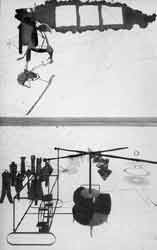 fig. 3 – Marcel Duchamp The Large Glass, 1915-1923 |
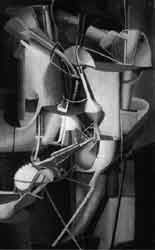 fig. 4 – Marcel Duchamp Bride, 1912 |
In the previous essay on the relationship between de Chirico and two important symbolist painters, Böcklin and Klinger, we have seen how in many of de Chirico’s works, the unpredictable choice of objects (for example the “horrible” pink glove in Chant d’amour), “without any meaning according to human logic”, take on a “sense of premonition” only when incongruously juxtaposed with other objects. For example the willful vicinity of the glove, the ball, the head of Apollo, the archways, etc., constitutes a kind of mysterious revelation, in the web of analogies and interconnections spun by the different presences. It is obvious that each of these objects comes to take on its new true/probable meaning in relation to the artist’s experience, in a form as yet not transparent even to himself. Through his object theatres de Chirico visualises kinds of “moods” that are in no way psychological explanations. It is the force of these sensations, rather than their ultimate meaning, that the artist tries to communicate to us. In the end, every metaphysical interior, every juxtaposition of objects, has for him the value of an intuition, the revelation of a secret memory, or the rebuilding of a distant atmosphere.
(Adriano Altamira; De Chirico and Duchamp, Metafisica, 2006, No. 5-6, pp. 80-86.)
Adriano Altamira; De Chirico and Duchamp (Part 2)
Notes:
[1] Francesco Poli, De Chirico fra Duchamp e Malevich, in «Studio G7» n. 2, February 1980 in the special supplement Dossier ‘70.
[2] Salvador Dalí wrote: “With terrible calmness, Giorgio de Chirico shows us figurative suppositions born from the juxtaposition of multiple apparently inoffensive objects…”
[3] Louis Aragon in La peiture au défi, March 1930, cited in Les collages, ed. Herman, Paris, 1965.
[4] William Rubin in Giorgio de Chirico, catalogue of the exhibition that opened in November 1982 at the Haus der Kunst, Munich, and then at the Centre Pompidou, Paris, from February 1983. The exhibition was organized by Rubin himself, together with Wieland Schmied and Jean Clair. In his text Rubin attempts to compare some of de Chirico’s mock scientific schemes (see Le prophète, 1915) and Duchamp’s “amusing physique” (Giorgio de Chirico – der Metaphysiker, Prestel-Verlag, Munich, 1982).
[5] Tristan Tzara, foreword to Dada painters and poets, ed. Robert Motherwell, New York, 1961.
[6] See also my Miti romantici, in which I argue that the main reason for Tzara’s interest in Lautréamont is the famous series of the “Beautiful as” of the fifth Song of Maldoror. Here, when Lautréamont writes: “beautiful as the law of arrest of development of the breast etc…”, he compares two terms which are completely unrelated – the second is probably copied directly from a medical encyclopedia. Lautréamont thus works on the intervals, on the links between one image and another, creating an entirely new effect of alienation –. The passage of some of his images from the written page to the Dadaist drawing or photograph, beginning in the 1920s, takes place in a natural way with little need for translation: see the various references, for example by Man Ray, to the famous phrase: “Beautiful as the encounter of an umbrella and a sewing machine on a dissection table.”
[7] See Octavio Paz in Aparencia desnuda: “Duchamp himself has referred many times to that memorable night in 1911 in which – accompanied by Apollinaire, Picabia and Gabrielle Buffet – he went to the representation of Impressions d’Afrique”. Paz also quotes the following statement by Duchamp: “Basically, the one responsible for my glass work The Bride Stripped Bare by her Bachelors, even, was Raymond Roussel. From the moment I watched his play I was immediately aware of the possibilities offered by his conception. I realized that as a painter it was better to be influenced by a writer than by another painter. And Roussel showed me the way…”
[8] In ibid., Octavio Paz cites the following phrase by Duchamp: “The Hanged Female is the form in its normal perspective of a Hanged female of which it may be possible to find the real form”, and adds: “Thus the forms of the Bride are just an appearance, one of her possible manifestations. Her authentic form, her true reality, lies elsewhere. Duchamp said that it is the projection of a three-dimensional object which, in turn, is the projection of an (unknown) four-dimensional object. The Bride is the copy of a copy of an idea”.
[9] Here it is worth remembering the question posed by Maurizio Calvesi: why oculist and not ocular witnesses? Because they are ocular witnesses of the occult – occultist witnesses.
